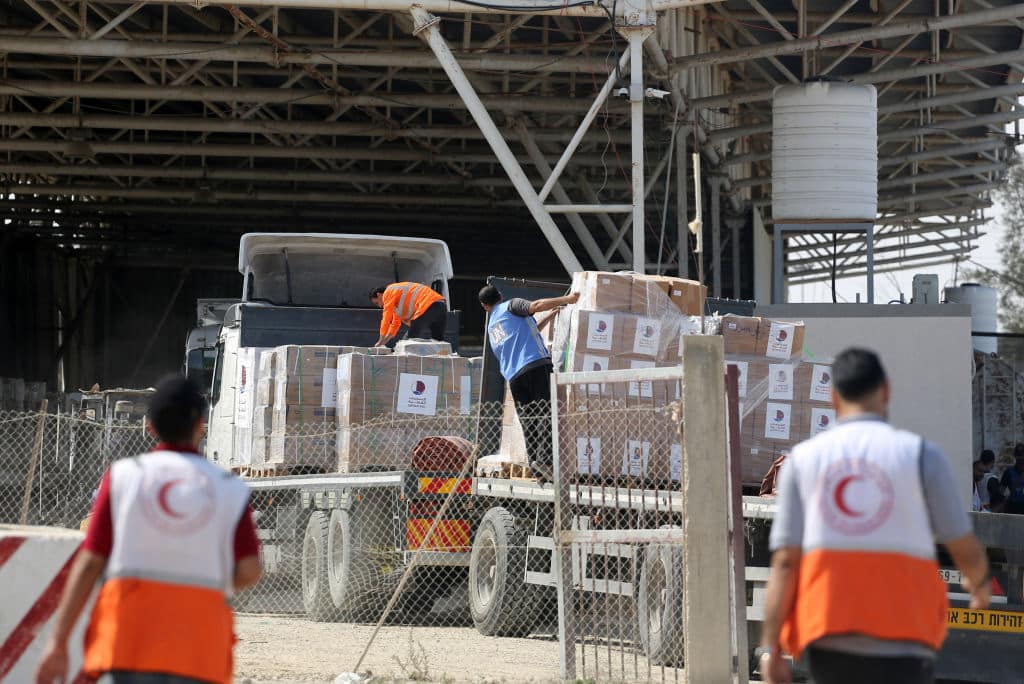TOPLINE
Humanitarian aid continued to flow into Gaza Sunday afternoon through the Rafah border crossing—the crossing between Egypt and Gaza that was opened for the first time in two weeks on Saturday.
KEY FACTS
Fourteen additional aid trucks were allowed into Gaza Sunday afternoon, according to a post on X by Martin Griffiths, UN Under-Secretary-General for Humanitarian Affairs and Emergency Relief Coordinator.
The first trucks with aid arrived in Gaza yesterday and carried food, water and medical supplies, though the World Health Organization said much more is needed, NBC News reported, and the aid trucks notably did not have fuel, which Gaza has been without for weeks.
Aid had been blocked—but the allowance of it was recently negotiated by leaders including President Joe Biden—since Israel implemented a blockade after Hamas’ October 7 attack on Israel.
CRUCIAL QUOTE
Griffiths called the second convoy of trucks entering Gaza “another small glimmer of hope for the millions of people in dire need of humanitarian aid,” in the statement on X. “But they need more, much more,” he continued. He had previously said Saturday’s delivery was a “very good start, but it’s nowhere near enough to provide for the needs of up to 2 million people,” NBC News reported.
BIG NUMBER
100. That’s how many trucks daily UN officials have said Gaza would need to address “urgent needs,” according to Reuters.
Forbes Daily: Get our best stories, exclusive reporting and essential analysis of the day’s news in your inbox every weekday.Sign Up
By signing up, you accept and agree to our Terms of Service (including the class action waiver and arbitration provisions), and you acknowledge our Privacy Statement.
KEY BACKGROUND
More than 2 million people in Gaza have been without food, water, medical supplies and fuel since Israel closed the borders to aid following the October 7 Hamas attack that killed 1,400 Israelis. More than 4,300 Palestianians have been killed since the war began earlier this month, according to the Associated Press. Late last week, Israeli Prime Minister Benjamin Netanyahu announced Israel would allow “food, water and medicine” for civilians in the southern Gaza Strip “as long as these supplies do not reach Hamas.” Netanyahu was also clear that any supplies that reached Hamas will be “thwarted.” The decision to allow aid was made after a meeting with Biden in which he said he supported the decision.
WHAT TO WATCH FOR
U.S. Special Envoy David Satterfield told MSNBC Sunday that a “continuous flow” of humanitarian aid should get into Gaza through the Rafah border. Satterfield said he expects aid will be regularly moving into Gaza through the week, saying “we want to build that flow up to the levels necessary to begin to meet Gaza’s needs.”
